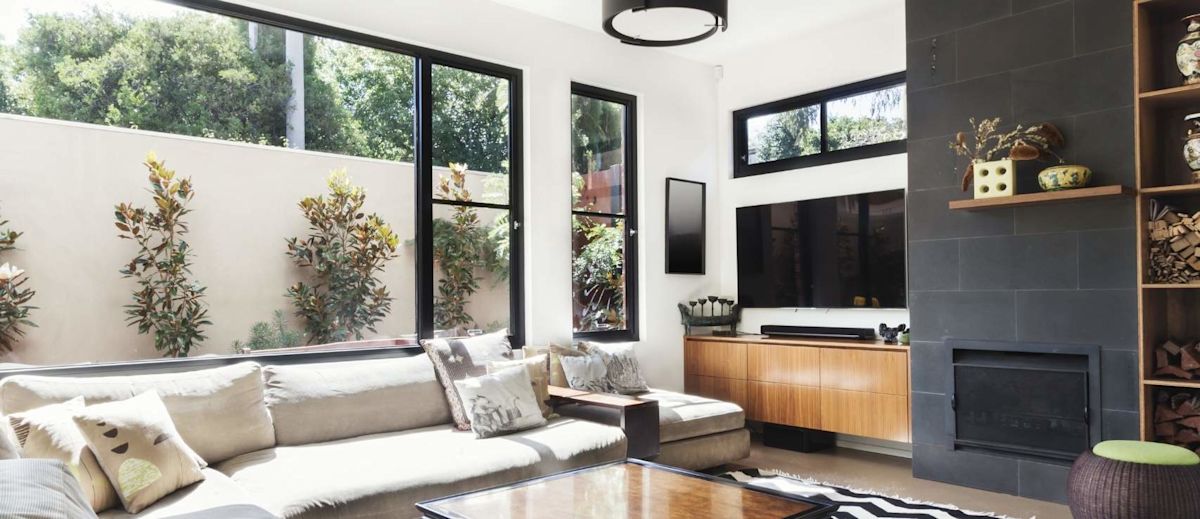
How to Lower Your Contents Insurance Costs
Kiwis are really feeling the squeeze lately, with prices climbing everywhere (looking at you, $7 cauliflowers!). If you’re like most of us, you’re scanning your bills, wondering, "Where can I cut back without sacrificing the essentials?"
One expense worth reviewing is contents insurance. While cutting cover entirely isn’t ideal, there are ways to adjust your policy that could help reduce your premium while still protecting what matters. In this guide, we’ll go over how to find low cost contents insurance in NZ, how adjusting your excess and coverage may lower costs, and other practical ways to keep insurance affordable. Let’s dive in!
1. Increase your excess and save more!
One way to lower your contents insurance cost is by adjusting your excess—the amount you pay if you make a claim. Opting for a higher excess may help reduce your premium, as insurers often lower premiums when policyholders take on more upfront costs. However, it's a trade-off:
A lower excess means a higher premium but less to pay if you claim.
A higher excess may mean lower premiums but more to pay if you need to claim.
If you don’t claim often, choosing a higher excess might be a way to manage your contents insurance cost while keeping cover in place.
Hypothetical example: Meet Sarah
Sarah, a young professional in Auckland, wanted to reduce her contents insurance premium. She had a $50,000 contents insurance policy with an excess of $500 and was paying $570 per year.
She considered increasing her excess to see how it might affect her low-cost contents insurance options:
Excess ($) | Yearly average contents insurance costs ($) | Saving ($) |
$500 | $570 | - |
$1,000 | $462 | $108 |
$2,000 | $418 | $152 |
Source: Quashed. Note: Actual costs will vary depending on the insurer, policy coverage, sum insured levels, and location.
By taking on a higher excess, Sarah could potentially save $108 annually, depending on her insurer and policy. Looking for more on contents insurance? Our blog, Your Complete Guide to Contents Insurance, explains how it works, what it covers, and things to consider when choosing a policy.
2. Secure your home and save on premiums
Boosting your home security could help lower your contents insurance costs. Adding burglar alarms, deadlocks, or security cameras may reduce the risk of theft—something some insurers consider when setting premiums. While not all policies offer discounts for security upgrades, it’s worth checking with your provider to see if making your home more secure could also save you money.
Want to know what else affects the cost of contents insurance? Our blog, Key Considerations for Contents Insurance, breaks it down.
3. Shop around and compare with Quashed
It’s a no-brainer—comparing contents insurance options can help you make a more informed choice. Prices vary between insurers, so it makes sense to explore different options before renewing or signing up.
Quashed makes it simple to compare policies side-by-side, giving you a clearer picture of what’s available in the market. Even if you’re happy with your current insurer, comparing options can help you understand where your policy sits in the market and inform your renewal decisions.
Looking for low cost contents insurance? Start your comparison with Quashed and see what policies are available today.
4. Keep an eye on your valuables to avoid overpaying
Being realistic about the value of your belongings could help you avoid paying more than necessary for your contents insurance premium. Overestimating your coverage amount may lead to higher premiums, while underestimating means you might not have enough cover if you need to claim.
A good habit is to review your home inventory every year and update your sum insured based on what your belongings are actually worth. This helps keep your policy accurate and ensures you're not paying for more coverage than you need.
Hypothetical example: Meet Karen
Karen, a renter in Porirua, initially estimated that her belongings were worth $150,000. However, after completing a proper inventory, she realised they were actually worth $50,000. Here’s how this change could affect her contents insurance cost:
Sum Insured ($) | Yearly average contents insurance costs ($) | Saving from adjusting to $50,000 |
$150,000 (wrong valuation) | $1,266 | - |
$50,000 (correct valuation) | $881 | $395 |
Source: Quashed. Note: Actual costs will vary depending on the insurer, policy coverage, sum insured levels, and location.
This hypothetical scenario highlights the importance of accurately valuing your contents. If your sum insured is too high, you could end up paying more than necessary. If it's too low, you might not receive enough if you need to claim.

5. Avoid small claims to manage your premium
It might sound counterintuitive, but making frequent small claims could affect your contents insurance cost over time. Some insurers take claim history into account when assessing policy pricing, which means making fewer claims may help maintain a lower premium.
If you can afford to replace smaller items yourself, it could be worth weighing up whether a claim is necessary. This doesn’t mean avoiding legitimate claims—it’s about balancing out-of-pocket costs with the long-term impact on your policy.
Feeling stuck on where to start with insurance? Our blog post on comparing insurance in New Zealand has tips to help you find the right cover—stress-free.
6. Pay annually instead of monthly
Many insurers charge additional fees if you choose to pay your contents insurance premium in monthly instalments. In some cases, opting to pay annually may reduce your overall contents insurance cost, as some providers apply discounts for upfront payments.
While paying annually requires a larger upfront cost, it could mean lower total payments over the year. If your insurer offers this option, it’s worth checking whether it aligns with your budget.

7. Ask about loyalty discounts
If you’ve been with your insurer for a while, it may be worth asking whether loyalty discounts are available. Some providers offer incentives for long-term customers, though this varies between insurers.
It’s always worth a quick call to check—after all, staying loyal shouldn’t mean overpaying. If your provider doesn’t offer a discount, it might be time to explore cheapest contents insurance options elsewhere.
Thinking about switching providers? Compare policies with Quashed to see what’s available in the market.
8. Avoid unnecessary add-ons
Some insurers offer optional policy add-ons, such as accidental damage cover or extended protection for high-value items. While these can be useful, they also increase your contents insurance cost.
Reviewing your policy to see whether these extras are necessary could help you manage your premium. If certain add-ons aren’t essential for your situation, adjusting your coverage might be a way to keep costs down while still maintaining the protection you need.
Looking to compare low cost contents insurance?
Over 45,000 Kiwis have signed up with Quashed to explore their options.
Sign up now to compare policies the easy way and see if you're paying too much.
Further reading
Looking to save on your contents insurance? Check out these helpful resources.
Complete Guide to Contents Insurance: Everything you need to know about coverage.
Contents Insurance Costs: Key factors that influence your premium.
Contents Insurance for Renters: Find out if it's worth getting covered.
Insurance Tips for Seniors: Useful advice tailored for older Kiwis.
Contents Insurance for Students: Affordable options for student living.
FAQs
How can I reduce my contents insurance premium in New Zealand?
To lower your contents insurance premium in New Zealand, consider the following strategies:
Increase your excess: Choosing a higher excess may lower your premium, but ensure this amount remains affordable if you need to make a claim.
Bundle policies: Some insurers offer discounts when you combine contents insurance with other policies, such as car or home insurance. Check with providers for eligibility.
Enhance home security: Installing security features like alarms or monitored systems may reduce the risk of theft, potentially lowering your premium. Always verify with your insurer.
Pay annually: Some insurers provide discounts for annual lump-sum payments compared to monthly installments. Consider what suits your budget best.
Compare providers: Regularly reviewing insurance options can help you find competitive pricing. Be sure to compare policy features, not just costs.
Does increasing my excess lower my contents insurance premium?
In most cases, yes—increasing your excess (the amount you contribute towards a claim) can reduce your insurance premium. However, ensure this amount remains manageable if you need to make a claim.
Can installing a security system reduce my contents insurance costs?
Installing security features such as monitored alarms, deadbolts, or security cameras may reduce your risk profile, potentially leading to premium reductions. Eligibility varies by insurer, so check which security measures qualify.
Is it cheaper to pay contents insurance premiums annually or monthly?
Paying annually can sometimes be cheaper, as some insurers provide discounts for upfront payments. However, always compare the total cost across payment options to determine what’s best for your financial situation.
How does bundling insurance policies affect my premium?
Some insurers offer multi-policy discounts when you bundle contents insurance with other policies, like car or home insurance. Confirm the actual savings and coverage benefits to ensure the bundled policy aligns with your needs.
Will shopping around for contents insurance save me money?
Yes, comparing multiple insurers can help you find a competitive premium. When comparing, ensure policies provide the coverage you need, rather than focusing solely on cost. Online comparison tools or consulting insurance brokers may be helpful.
This article provides general information only and does not constitute insurance or financial advice. Insurance policies vary between providers, and you should check with your insurer or a licensed adviser for guidance specific to your situation. For full details, refer to Quashed’s terms and conditions.
